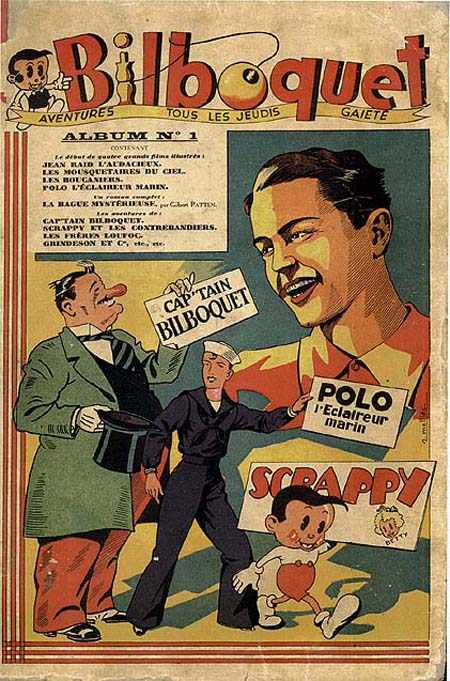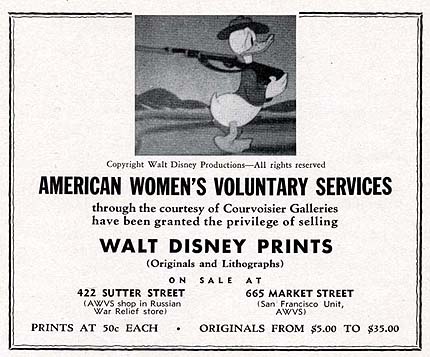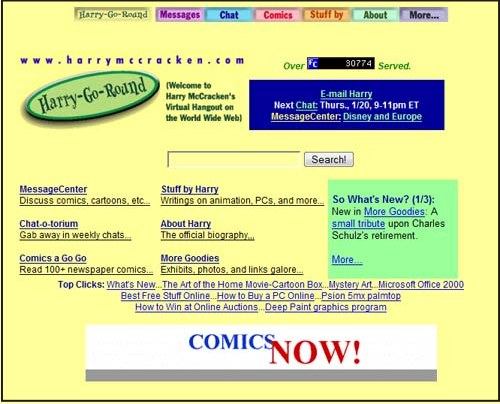Here, for no particular reason other than that I just redesigned around here (and courtesy of Archive.org) is a glimpse of an early version of this site. I think it’s the second major iteration, from early 2000. Note that my background color hasn’t changed in all that time…
Back From the Dead!
By almost any measure, this has been the most eventful month of my life.
I started it by quitting one of the best jobs in the world, a move that attracted far more interest than I ever dreamed it might. And then I returned to that job–something I never, ever expected to do–after an utterly improbable sequence of events.
More important, I also marked the start of the month by becoming an uncle, as a happy side effect of the fact that my sister became a mother.
So it’s kind of been a time for new beginnings. What better month to relaunch Harry-Go-Round?
First, a word or two about why I’ve let the site fester for so long. For one thing, I’ve been busy. But even when I made time to work on the site, I faced a crippling onslaught of spam, both on my blog and message board. And I wasn’t crazy about the blog platform I was using, in part because it was so spam-ridden, and in part because it just wasn’t much fun to use.
So I’ve dumped most of the technical underpinnings of the old Harry-Go-Round. I’m now blogging via the wonderful, wonderfully customizable piece of software known as WordPress, which I believe will let me evade the spammers who trashed my old blog (curse you, “Sten,” whoever you are). I’d like to revive my MessageCenter, too–but haven’t found a modern forum platform I really like. If I do, I’ll bring the MessageCenter back, although I frankly don’t think its loss is a huge tragedy.
If you know this site, you can see that I’ve taken the opportunity to give it a visual facelift, too. It’s apparent mostly on this bloggy home page at the moment, but I plan to redo most or all of the other content over time. For now, most of that’s still in my old template. (Oh, and I’m going to officially retire the Comics a Go Go feature, which I haven’t updated in a long, long time–let me know if you have a problem with that.)
I may blog a bit more about things outside of the world of cartoons and comics here on out–other aspects of pop culture, maybe some tech, possibly even a little more personal stuff. We’ll see. Mostly, I’ll just try really hard to keep the site out of limbo from here on out.
A few other housekeeping notes:
A) One thing that never disappeared was my weekly Sunday chats. We’ll be gathering tomorrow night, in fact.
B) If you subscribed to my old blog via an RSS reader, please resubscribe with one of the links to the left.
C) If you encounter any technical problems with the new site, let me know via the Contact Harry link above. Thanks!
Don’t Rain on Scrappy’s Parade
Here, swiped from a recent Hake’s auction, is a spread from the 1932-1933 Columbia Yearbook–an amazing, amazingly-illustrated book promoting the studio’s releases. Right behind Columbia herself is an alarmingly fuzzy, spats-wearing Mickey Mouse; Scrappy, Yippy, and Krazy Kat are trailing behind. Which was logical enough given that the mouse was unquestionably the biggest cartoon star whose films were released by Columbia. (I’m not even going to comment on the other characters in the parade–no, not even the topless cannibal lady.)

But in 1932–after the yearbook was released, I’m guessing–Disney left Columbia for United Artists. (Columbia retained rights to the Disney films it had released already.) And the 1933-1934 Columbia Yearbook has a rather similar spread–but with Scrappy and Yippy promoted to the head of the parade, Krazy in close proximity, and Mickey trudging along in the middle of the pack.
This must be one of the few pieces of promotional art in animation history to show Mickey as an also-ran. And you can kind of see why Columbia would want to do that, given that A) it was still releasing old Mickey Mouse cartoons, but B) it certainly didn’t want to make Mickey Mouse out to be a bigger cartoon celebrity than Scrappy or Krazy.
One also wonders whether Miss Columbia’s flag–with the reference to the studio still leading the world in short features–is a defensive reference to Disney’s defection. Here’s that art, also from the Hake’s auction.

By 1935, Mickey was absent altogether from the Columbia Yearbook–but Scrappy and Krazy, of course, remained. That Columbia Yearbook I actually own. And I’ll show it in an upcoming post…
Bogie and Scrappy: The Inevitable Teamup
So it’s come to this: I’m no longer the most enterprising Scrappy scholar in my own family. Once again, my sister–with the able assistance of my brother-in-law–has made an astonishing discovery. Namely, an appearance by Scrappy (and Margy, and Yippy) in a Humphrey Bogart picture.
The film in question is 1942’s All Through the Night, and it’s got an all-star cast: Bogie is joined by Peter Lorre, Conrad Veidt, William “You kids get out of my kitchen” Demarest, Phil Silvers, Jane Darwell, Jackie Gleason, and others. The plot involves Damon Runyonesque types and Nazis; Bogie, playing “Gloves Donahue,” has suffered the assassination of the baker of his favorite cheesecake and has been framed for (another) murder himself. Amazing stills after the jump….
Scrappy! In the Comics! Speaking French!
This I know: My sister is the best gift giver in the world. At least when it comes to the most important gifts of all–those being, of course, ones given to me.
I received the latest evidence of this eternal verity on Christmas, when I opened a package which turned out to contain a French comic album. One published in 1938. Which, she later told me, she bought at a flea market in Bordeaux.
Here’s its cover:

Hmmm, that’s interesting–there’s Major Hoople, and his name in France was Captain Bilboqu–HEY! THAT’S SCRAPPY!
Oh, For a Time Machine…
As this 1943 ad shows, if I had lived in San Francisco back then, and had been interested in animation, and had been well-heeled enough to have a few hundred dollars to spare, I could have probably put together a truly amazing collection of Disney cels. (One wonders which examples were impressive enough to rate a top-of-the-line $35 pricetag.)
Wonder if any of the ones that San Franciscans picked up back then are still proudly displayed anywhere in this city?

The Act

I’m in Boston for the holidays, and today I did one of the few things you can do in New England that you just can’t do in California–I went candlepin bowling. While I waited for my friend Deb to arrive at the alley, I checked out its video games–and found that one of them was The Act, an “interactive romantic comedy” which I’d read about on Cartoon Brew earlier this year.
The Act is tough to describe, but virtually every reference I’ve seen to it brings up Don Bluth’s Dragon’s Lair, and that’s as good a frame of reference as any, although this new game is vastly more interesting than the Bluth one. It’s an arcade game done in full character animation–amazingly, maybe the first since those Bluth laserdisc games of the 1980s, even though the technology is far more practical these days. But while the Bluth games’ themes were pretty much exactly the same as other early arcade games, The Act is indeed a romantic comedy, involving a klutzy window washer, a sexy nurse, an unpleasant boss, and other characters. I’m not sure if the parallels are intentional, but it reminds me a lot of a Harold Lloyd film. (In part because there’s no dialog–or at least I didn’t hear any during the section of the game I was able to get through before losing.)
Dragon’s Lair was a game with a simple input device (a joystick) and game play that was almost beside the point (you thrashed the joystick around, but it didn’t seem to have that much impact on what happened). The Act has an even simpler input device (a rotating knob, not unlike the one from Pong), but the game play is surprisingly subtle. Basically, you rotate the knob to control the hero’s behavior, and the idea is to keep him active without forcing him to go over the top. So in the first bit of game play, in which he’s flirting with the nurse in a Casablanca parody, you’ve got to turn the knob with a lot of finesse–rather slowly, precisely, and sporadically–to avoid scaring her off.
Between the nicely-done animation, unusual premise, and unique game play, I found the game pretty absorbing, and was playing when Deb arrived. She was intrigued, but when I asked her if she wanted to have a go, she said “No!” I should have asked her why, but didn’t.
Back at my folks’ house, I looked into the story behind The Act, and found that I’d lucked into being one of the first people to play it. It’s the product of a Boston-area company called Cecropia, and is in a test rollout at seven Massachusetts and New Hampshire locations through January, including the bowling alley we’d gone to. The animation, directed by Broose Johnson, was done by laid-off veterans of Disney’s Orlando studio, and it’s good, funny stuff; even the backgrounds are well done.
(The Cecropia site has more background on the game.)
The Act has almost nothing to do with the barely-alive industry that arcade gaming has become–it’s low-key, free of violence other than the slapstick kind, and rewards restraint on the part of the game player. Most players of arcade games–who seem to be a pretty lonely bunch of pre-teen boys these days–probably wouldn’t like it; most people who might like it probably haven’t played an arcade game in years.
I have no idea whether it stands a chance as a business enterprise, but I hope so–it’s a new idea, and one which makes excellent use of hand-drawn animation. If you find yourself near any of the test locations in the next few weeks, check it out. And if you don’t find yourself near them, stay tuned: Apparently, Cecropia has plans to release a home version at some point.
I hope it’s a success, one way or another–I’d like to see its makers get a shot at continuing this experiment with further games…
Joe Barbera, 1911 (?)-2006
When a major animation figure who was involved with a lot of wonderful cartoons dies, is it inappropriate to dwell on the dark side of his career? If anyone’s reading this, I may find out.
At MGM in the 1940s, Joe Barbera and Bill Hanna made some of the funniest, most expressive, most alive short films–of any sort–ever produced anywhere. If they’d left the business when the studio’s cartoon arm closed in 1957, I’m convinced, their reputation today would be pretty simple to summarize: Everyone would know that they were grand masters of the American animated short, period.
But Bill and Joe went on to found their own studio, one whose yearly output dwarfed their entire MGM career. And it produced…well, mostly cynical crud. (For years, my attitude towards the early Huck Hound and Yogi Bear shorts was almost entirely dispassionate, perhaps because we got them on Portland TV only when I was about nine and had already been soured on HB from watching too much of its later output; recently, I’ve come to appreciate them for their voicework, design, and, in some cases, writing. But I’d still rather watch almost any Jay Ward cartoon from the same era.)
From the start, the HB studio’s work was derivative–Ruff and Reddy being clones of Crusader Rabbit and Rags–and by the mid-1960s, most of it was derivative junk without the saving graces of the early stuff. HB has been called the studio that saved the animation business, but to borrow a phrase from a war of that era, it had to destroy the artform in order to save it. I still wonder if TV animation would have gotten so bad so quickly if Hanna-Barbera hadn’t defined schlockiness down a little more each season for so long.
And it was all doubly depressing because Hanna and Barbera had proved themselves capable of making wonderful cartoons. For all we know, Lou Scheimer and Norm Prescott were capable only of swill; Bill and Joe didn’t have that excuse. I remain convinced that they could have done better. Even with the budgets they had. Even in an era in which the networks made it almost impossible to produce a good TV cartoon.
(Question: Is it pure coincidence that when HB utterly dominated the industry, nearly all television animation was abysmal–and when the company’s fortunes took a turn for the worse, in the late 1980s or so, the quality of the average TV cartoon improved sharply? Discuss…)
(Another question: If Daws Butler had never lived, would anyone remember the earliest HB cartoons with even a small fraction of the fondness they generate today?)
Pardon me–I think I’ll go off now and watch The Zoot Cat…
The Return–Slowly But Surely–of Harry-Go-Round
When I celebrated Friz Freleng’s birthday here back in August, I really didn’t intend to go for close to three months without blogging. Actually, I’ve been blogging up a storm–I’ve just been doing it over at my PC World technology blog. But I’ve neglected this site–mostly because things have been busy at work–and feel bad about it.
I’m resolved to get things rolling again here, and in that spirit, I’ve been working on reviving my MessageCenter, which was crippled by spam earlier this year and has been altogether offline for months. I have a rough draft of a new version (powered by BBPress) up; it still needs some refinement, but feel free to check it out if you have a moment. I’ll report back here when it’s ready for an official grand opening.
And with that, I’m leaving the country on a business trip. But I’ll be baaaaaaack before long…
Once More, With Freleng

|
As you may know, blogs everywhere are participating in a great Friz Freleng Blog-a-Thon today, in honor of the great man’s 100th (maybe) birthday. So here’s a Friz tribute I wrote a long, long time ago–it appared in Animato #18, which cover-featured Jerry Beck’s Friz interview, back in 1989. (Amazing in retrospect to think that back then, not only was Friz still with us, but I wrote of his career as a Warner Bros. director in the present tense.)
If I was going to write about Freleng today, I might come to different conclusions, or discuss them more artfully–or maybe not–but I decided to present my essay exactly as I wrote it back in the 20th century. In fact, after initially planning to OCR it into ASCII text, I decided I liked the scanned image–Times Roman type, crummy newsprint, and all (including at least one typo). It reminds me of the fun we had desktop-publishing Animato, back in the era when communicating with animation fandom required printing up magazines and begging comic-book distributors to take them so they could wind up in retail stores.
So here’s to you, Friz:


